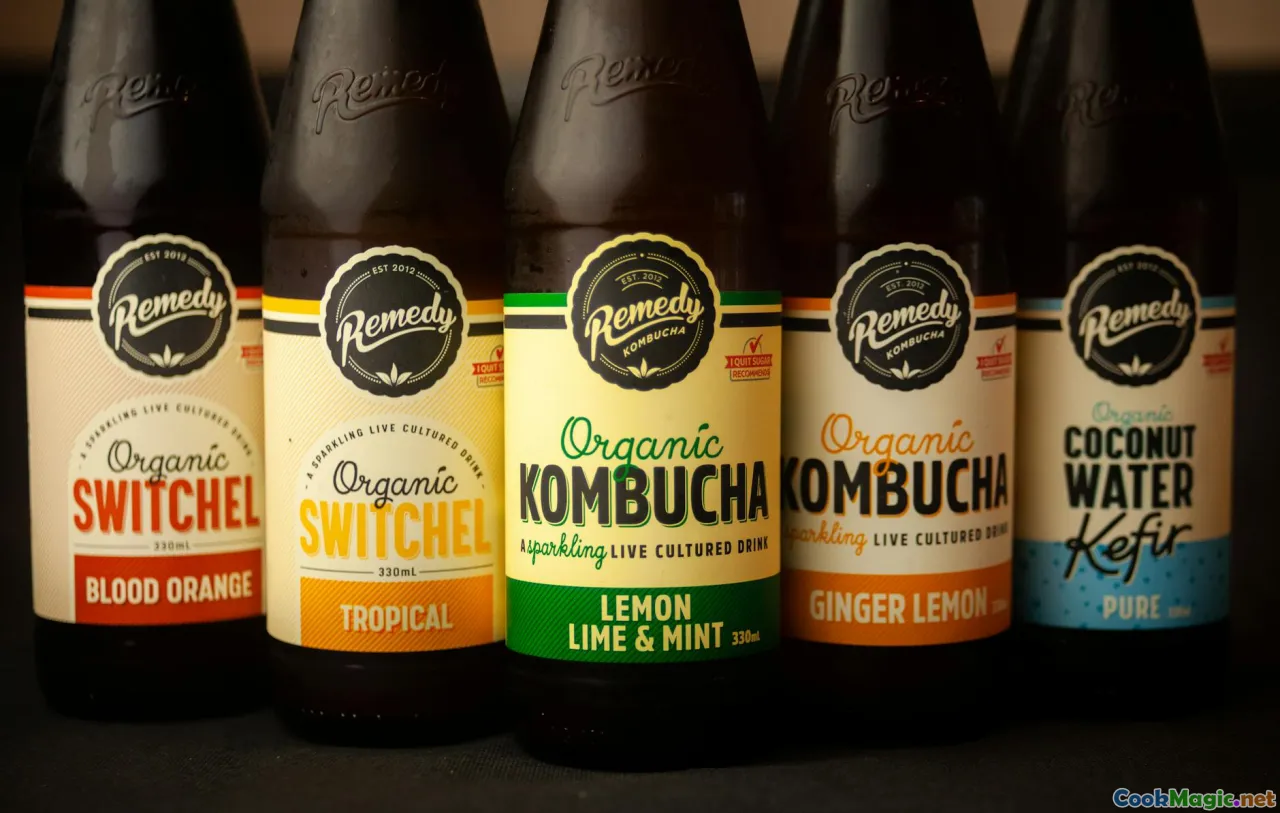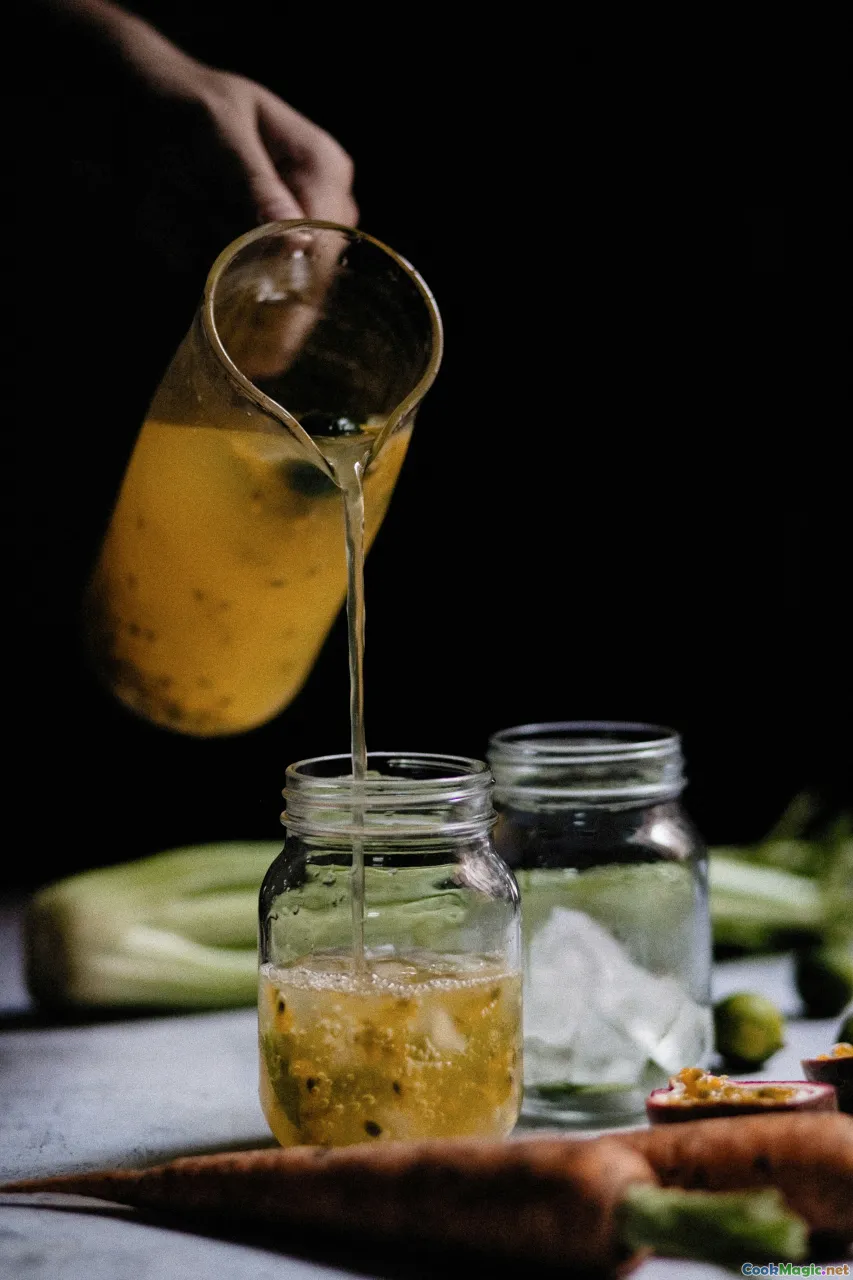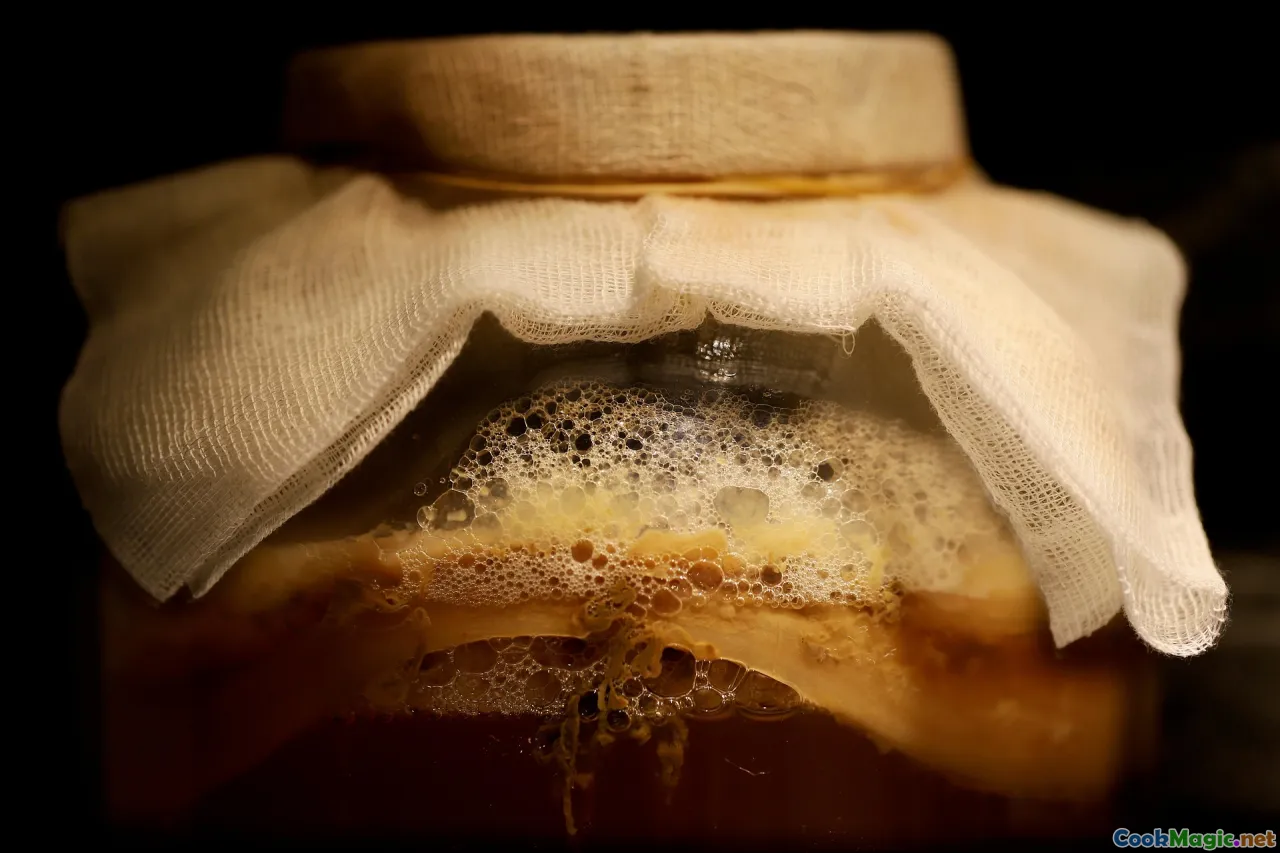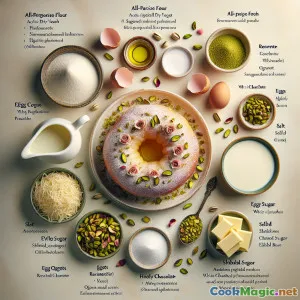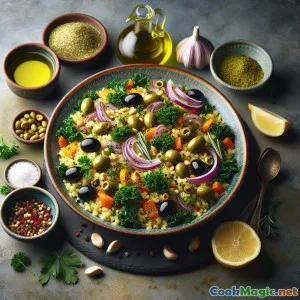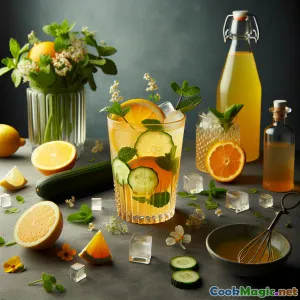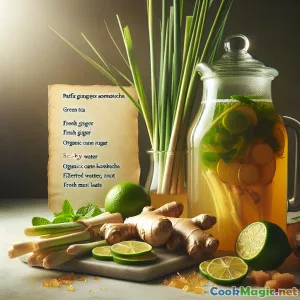
Imbir z Pacyfiku z Lemongrass: Aromatyczny napar z kombuchy
(Pacific Ginger Lemongrass: A Zesty Kombucha Brew)
(0 Recenzje)0
36
sierpień 05, 2025
Zgłoś problem
Składniki
-
4 bags Herbatniki z zieloną herbatą
(Preferencja ekologiczna)
-
50 grams Świeży imbir
(Cienko pokrojony)
-
2 stalks Łodygi trawy cytrynowej
(Bruised and chopped)
-
120 grams Ekologiczny cukier trzcinowy
(Do not reduce to ensure fermentation)
-
2 liters Woda filtrowana
(Temperatura pokojowa)
-
1 piece SCOBY
(Symbiotic Culture of Bacteria and Yeast)
-
250 ml Starter kombucha
(Unflavored, from previous batch or store-bought)
-
1 medium lime Skórka z limonki
(For flavor, optional)
-
4 leaves Świeże Liście Mięty
(Do dekoracji)
(Preferencja ekologiczna)
(Cienko pokrojony)
(Bruised and chopped)
(Do not reduce to ensure fermentation)
(Temperatura pokojowa)
(Symbiotic Culture of Bacteria and Yeast)
(Unflavored, from previous batch or store-bought)
(For flavor, optional)
(Do dekoracji)
Wartości odżywcze
- Porcje: 6
- Wielkość porcji: 1 szklanka (250ml)
- Calories: 48 kcal
- Carbohydrates: 12 g
- Protein: 0.2 g
- Fat: 0 g
- Fiber: 0.2 g
- Sugar: 10 g
- Sodium: 5 mg
- Cholesterol: 0 mg
- Calcium: 7 mg
- Iron: 0.1 mg
Instrukcje
-
1 - Brew the Tea:
Boil 500ml of filtered water. Add green tea bags, fresh ginger, lemongrass, and sugar. Stir to dissolve. Let steep for 10 minutes.
-
2 - Add Remaining Water:
Remove tea bags. Add the remaining 1.5 liters of filtered, cool water to bring liquid to room temperature.
-
3 - Combine With Kombucha Culture:
Pour the cooled tea mixture into a sterlized glass jar. Add SCOBY and starter kombucha. Cover with a breathable cloth and secure.
-
4 - Primary fermentation:
Let ferment undisturbed at room temperature (21-24°C) for 2-4 days for subtle tang or up to 7 days for bold flavor. Taste daily after day 2.
-
5 - Bottle & Secondary Fermentation:
Remove SCOBY and reserve 1 cup of kombucha for next batch. Strain kombucha, discarding ginger & lemongrass. Add lime zest if using, then bottle leaving space at top.
-
6 - Carbonate & Refrigerate:
Seal bottles and let sit at room temperature 1-2 days to carbonate. Refrigerate to halt fermentation. Serve chilled over ice and garnish with mint leaves if desired.
Boil 500ml of filtered water. Add green tea bags, fresh ginger, lemongrass, and sugar. Stir to dissolve. Let steep for 10 minutes.
Remove tea bags. Add the remaining 1.5 liters of filtered, cool water to bring liquid to room temperature.
Pour the cooled tea mixture into a sterlized glass jar. Add SCOBY and starter kombucha. Cover with a breathable cloth and secure.
Let ferment undisturbed at room temperature (21-24°C) for 2-4 days for subtle tang or up to 7 days for bold flavor. Taste daily after day 2.
Remove SCOBY and reserve 1 cup of kombucha for next batch. Strain kombucha, discarding ginger & lemongrass. Add lime zest if using, then bottle leaving space at top.
Seal bottles and let sit at room temperature 1-2 days to carbonate. Refrigerate to halt fermentation. Serve chilled over ice and garnish with mint leaves if desired.
Więcej o: Imbir z Pacyfiku z Lemongrass: Aromatyczny napar z kombuchy
Pacific Ginger Lemongrass Kombucha: A British-Pacific Fusion of Flavor and Vitality
London’s thriving multicultural tapestry is continually weaving new culinary innovations, not least among its thriving beverage scene. Pacific Ginger Lemongrass Kombucha is a sparkling celebration of British home-brewing trends infused with vibrant wafts of Southeast Asian influence—a marriage symbolic of England's open embrace of global flavors. This effervescent, tangy drink beckons both novice and seasoned brewers seeking far more than just hydration: it’s wellness, transformation, ritual, and refreshment in one.
The Origins of Kombucha
Kombucha’s provenance traces through Eastern China, it migrated across the ancient tea routes to Russia and Europe, gaining notoriety for its intriguing 'living tea' properties. The drink became an underground sensation in the United Kingdom in the late twentieth century following the rise of health-food stores and alternative wellness communities.
At its base, kombucha depends on a Starter Cultures Of Bacteria and Yeast (SCOBY) which orchestrates the transformation of sweetened tea into probiotic-rich nectar; that symbiosis, a miniature wonder of fermentation, creates endless possibilities for flavor and well-being. Layering it with dynamic, fresh botanicals is a beloved tradition from West Coast America to British health cafes.
The Ginger Lemongrass Twist: Inspiration & Uniqueness
Pacific flavors are mounting a global wellness crusade—and hibiscus, passionfruit, ginger, and lemongrass are superheroes of this movement. Ginger adds a spicy warmth, helping aid digestion and invigorate. Lemongrass, with its citrus brightness, is uplifting, balancing the sweetness of cane sugar, while the subtle peppery-lime aroma freshens up the palate.
Here, using green tea bags in lieu of black tea gives the kombucha a more nuanced, lightly floral note and less caffeine—a consideration for many in cosmopolitan areas. Combining Britain’s famous tradition of homebrewing with pan-Pacific botanicals, this recipe is tailor-made for creative kitchen explorers and mindful meals.
Cultural Resonance & Health Notes
While not an ancient British recipe, kombucha brewing is now steadfastly part of English kitchen science—a collective, transformative project filling jars across flats, allotments and garden sheds by people of every background. Young professionals, students and artists sip kombucha as a desk-side fizz, a cocktail mixer (vodka or gin make a lively match), and a post-yoga boost.
The process encourages patience and mindful self-care: monitoring, taste-adjusting, passing on SCOBYs as gifts—echoes of age-old methods now writ fresh with ginger and lemongrass. Besides its probiotic content that may favor gut health, the drink is infinitely lower in sugar compared to sodas and store-bought energy drinks—just note that home fermentation doesn’t guarantee perfect sugar measurements or alcohol elimination.
Practical Tips & Brewer’s Notes
- Patience Rewards Flavor: Secondary fermentation rewards patience. For more fizz, let it sit at room temperature a bit longer—just burp your bottles daily to prevent explosions!
- Sanitize All Equipment: This lowers contamination risk and ensures pure, beautiful kombucha every time.
- Customize Boldly: Experiment with additional spices (star anise, kaffir lime leaves), citrus for more zing, or a splash of hibiscus for color in the secondary fermentation.
- Use Organic Botanicals: Pesticide residues don’t benefit the SCOBY or you.
Enjoyment Suggestions
Enjoy this kombucha well-chilled in a highball glass with extra lime, or pair it with fusion brunch, picnic fare, or contemporary English finger foods. It also sings beautifully in mocktails—topped with coconut water, muddled cucumber, or a dash of elderflower cordial.
Closing Reflections
Home-fermented kombucha, especially when infused with ginger and lemongrass, is an inventive gesture. It embodies the curiosity and adaptability of English cuisine, fusing ancient ritual with new flavor adventures. Embrace mistakes, let your palate guide you, and soon enough, kitchen guests will ask, “How do you make that incredible, healthy fizz again?”

